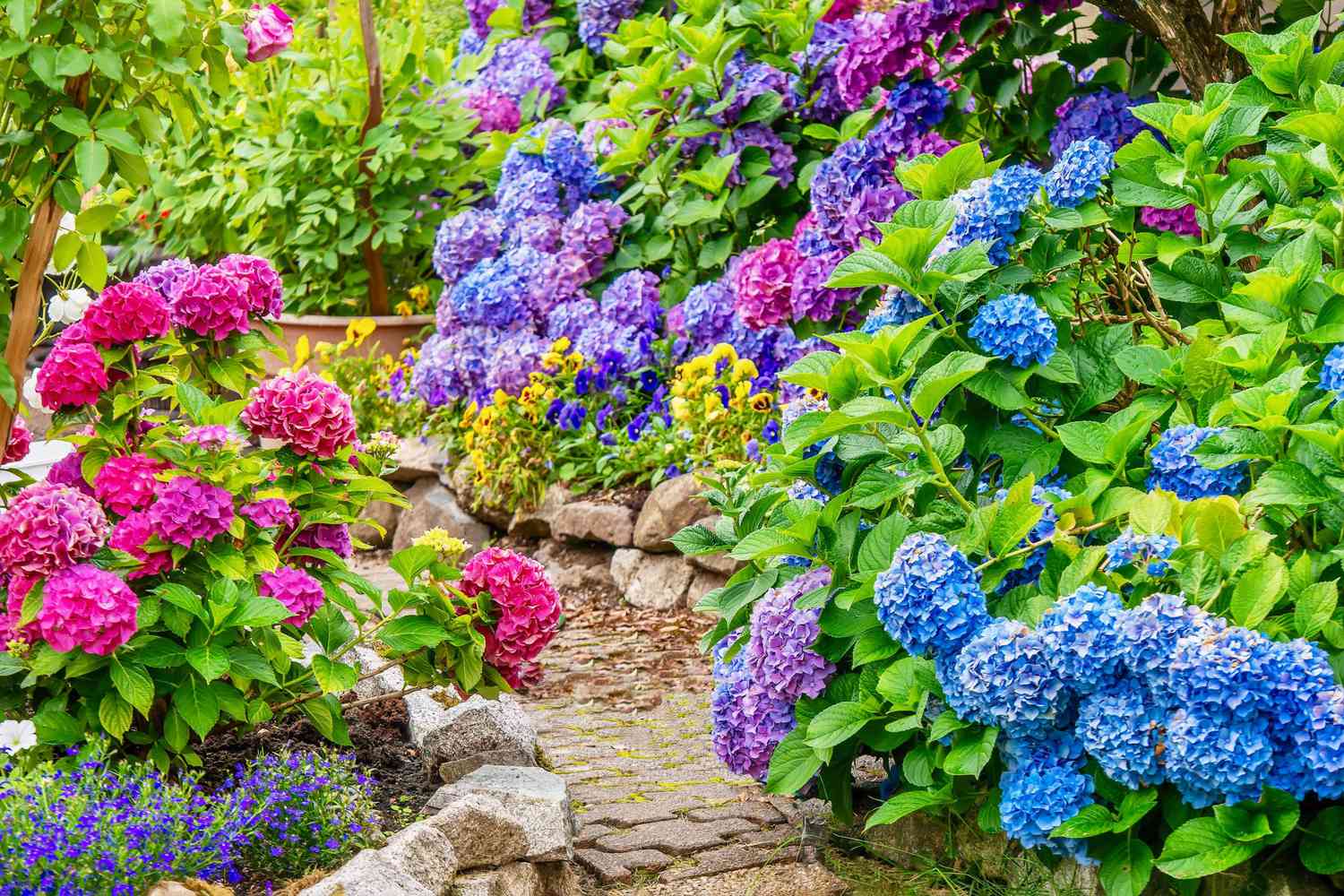
Flower gardening isn't just about adding splashes of color to your outdoor space; it's a hobby that nurtures creativity, patience, and an appreciation for the beauty of nature. Whether you're a seasoned green thumb or a budding gardener, understanding the nuances of growing flowers can transform your garden into a vibrant oasis. From the importance of soil health to choosing the right plants for your climate, mastering these elements is key to a flourishing garden. In this guide, we'll share 22 essential facts about flower gardening that will help you cultivate a stunning and healthy garden. Get ready to enrich your gardening knowledge and inspire your next outdoor project!
What Makes Flower Gardening Special?
Flower gardening stands out as a rewarding hobby and a vibrant addition to any outdoor space. Unlike vegetable gardening, which focuses on food production, flower gardening is all about beauty, color, and fragrance. It offers a creative outlet for gardeners to express themselves through the design and cultivation of flowering plants.
-
Flowers can improve mental health by reducing stress and promoting feelings of happiness. Studies have shown that being around flowers and engaging in gardening activities can have a positive impact on mental well-being.
-
Attracts beneficial insects like bees and butterflies, which are essential for pollination. This not only helps the garden flourish but also supports biodiversity.
Choosing the Right Flowers for Your Garden
Selecting the right flowers for your garden depends on several factors, including climate, soil type, and sunlight availability. Some flowers thrive in sunny spots, while others prefer shade.
-
Annuals such as petunias and marigolds need to be replanted each year but offer vibrant colors throughout the growing season.
-
Perennials, like lavender and peonies, return year after year, making them a long-term investment in your garden's beauty.
-
Native plants are often more resilient and require less maintenance because they are adapted to the local climate and soil conditions.
Tips for Maintaining a Healthy Flower Garden
A thriving flower garden requires more than just planting flowers. Proper care and maintenance are crucial for vibrant blooms.
-
Regular watering is essential, especially during dry spells. However, overwatering can lead to root rot and other diseases.
-
Mulching helps retain soil moisture, suppress weeds, and keep the soil cool. Organic mulches, such as straw or bark, also add nutrients to the soil as they decompose.
-
Deadheading, or removing spent flowers, encourages plants to produce more blooms and extends the flowering season.
The Role of Fertilizers and Soil Amendments
Nutrients are vital for the growth and health of flowers. Fertilizers and soil amendments can enhance soil fertility and promote robust plant growth.
-
Organic fertilizers, like compost or manure, release nutrients slowly and improve soil structure.
-
Inorganic fertilizers provide quick nutrient boosts but should be used sparingly to avoid harming beneficial soil organisms.
-
Testing soil pH and adjusting it with lime or sulfur can make a significant difference in plant health and flower production.
Pest and Disease Management in Flower Gardening
Pests and diseases can quickly turn a beautiful garden into a struggling one. Integrated pest management strategies can protect flowers without relying heavily on chemicals.
-
Companion planting can deter pests naturally. For example, marigolds emit a scent that repels nematodes and other garden pests.
-
Neem oil and insecticidal soaps are effective, eco-friendly options for controlling many common garden pests.
-
Regular monitoring for signs of disease, such as discolored leaves or stunted growth, allows for early intervention and can prevent widespread damage.
The Joy of Cut Flowers and Floral Arrangements
Growing flowers isn't just about beautifying the garden. Many gardeners grow flowers for the joy of creating cut flower arrangements.
-
Cut flowers can bring the beauty of the garden indoors, adding natural decor and fragrance to any room.
-
Floral arrangements made from home-grown flowers are unique and personal, making them perfect gifts that showcase the gardener's skill and creativity.
-
Certain flowers, like roses, lilies, and dahlias, are particularly well-suited for cutting and will produce long-lasting blooms in vases.
The Importance of Seasonal Planning in Flower Gardening
Seasonal planning ensures a continuous display of color and interest in the garden throughout the year.
-
Bulbs planted in the fall, such as tulips and daffodils, provide early spring color before most other flowers are in bloom.
-
Succession planting involves staggering planting times or choosing varieties with different blooming times to extend the flowering season.
-
Fall gardening tasks, like planting perennials and cleaning up annual beds, prepare the garden for winter and ensure a healthy start to the next growing season.
Encouraging Wildlife with Flower Gardens
Flower gardens can play a crucial role in supporting local wildlife, offering food, shelter, and nesting sites.
-
Birds, attracted by the seeds of flowers like sunflowers and coneflowers, can add life and movement to the garden.
-
Butterfly gardens, designed with specific host and nectar plants, can support butterfly populations and provide opportunities for observing these beautiful insects up close.
Flower gardening enriches not only the environment but also the lives of those who cultivate and enjoy these vibrant landscapes. With careful planning, maintenance, and a love for the natural world, gardeners can create stunning floral displays that thrive year after year.
Cultivating a Blooming Future
Diving into the world of flower gardening opens up a universe of colors, scents, and joys that enrich our lives and environments. From understanding the basics of soil health to mastering the art of seasonal planting, every bit of knowledge contributes to a more vibrant garden. Embracing local flora not only beautifies our spaces but also supports the ecosystem, inviting bees, butterflies, and birds into our gardens. Remember, patience and persistence are key. Gardens don't bloom overnight, but with dedication, they transform into stunning displays of nature's artistry. So, grab your gloves and trowel, and let's turn those gardening dreams into reality. Here's to creating personal paradises filled with endless blooms and to a future where our world is a bit more colorful and fragrant, one garden at a time.
Was this page helpful?
Our commitment to delivering trustworthy and engaging content is at the heart of what we do. Each fact on our site is contributed by real users like you, bringing a wealth of diverse insights and information. To ensure the highest standards of accuracy and reliability, our dedicated editors meticulously review each submission. This process guarantees that the facts we share are not only fascinating but also credible. Trust in our commitment to quality and authenticity as you explore and learn with us.


